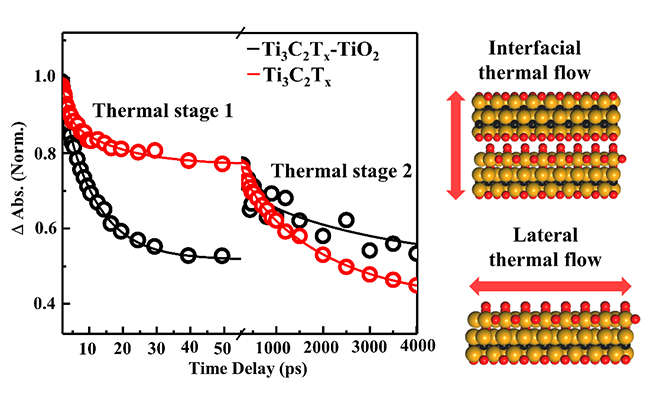The emerging two-dimensional transition metal oxide (MXene) is promising in multi-functional fields, including energy storage, electromagnetic shielding, and photodetection.
During the application process, the movement of electrons on the electrode causes heat generation and local temperature rise in the Ti3C2Tx sheet, which brings the risk of limited oxidation. Therefore, it is necessary to understand the microscopic mechanism of thermal energy transfer in order to avoid or mitigate thermal damage for Ti3C2Tx flake.
Recently, a group led by Prof. YANG Xueming and Prof. YUAN Kaijun from the Dalian Institute of Chemical Physics (DICP) of the Chinese Academy of Sciences, in cooperation with Prof. LI jiebo and Prof. YAN Xin from Beihang University, revealed that surface oxidation could modulate the interfacial and lateral thermal migration of MXene (Ti3C2Tx) Flakes.
The results were published in Journal of Physical Chemistry Letters on October 28.

Surface oxidation modulated the interfacial and lateral thermal migration of MXene (Ti3C2Tx) flakes (Image by ZHANG Qi)
Using femtosecond ultrafast time-resolved spectroscopy and molecular dynamics simulations, this team revealed the Ti3C2Tx-TiO2 interface structure in partial oxidation of Ti3C2Tx could accelerate the heat transfer rate between the interfaces but hinder the in-plane thermal diffusion rate.
The molecular dynamics simulation clarified the relationship between the oxidation probability of Ti3C2Tx interface and the thermal conductivity. It also explained the influence of the chemical bond structure on the thermal conductivity from the molecular level.
This work was supported by the National Natural Science Foundation of China, the Strategic Priority Research Program of the Chinese Academy of Sciences, the Chemical Dynamics Research Center, and the international partnership program of Chinese Academy of Sciences. (Text by Zhang Qi)